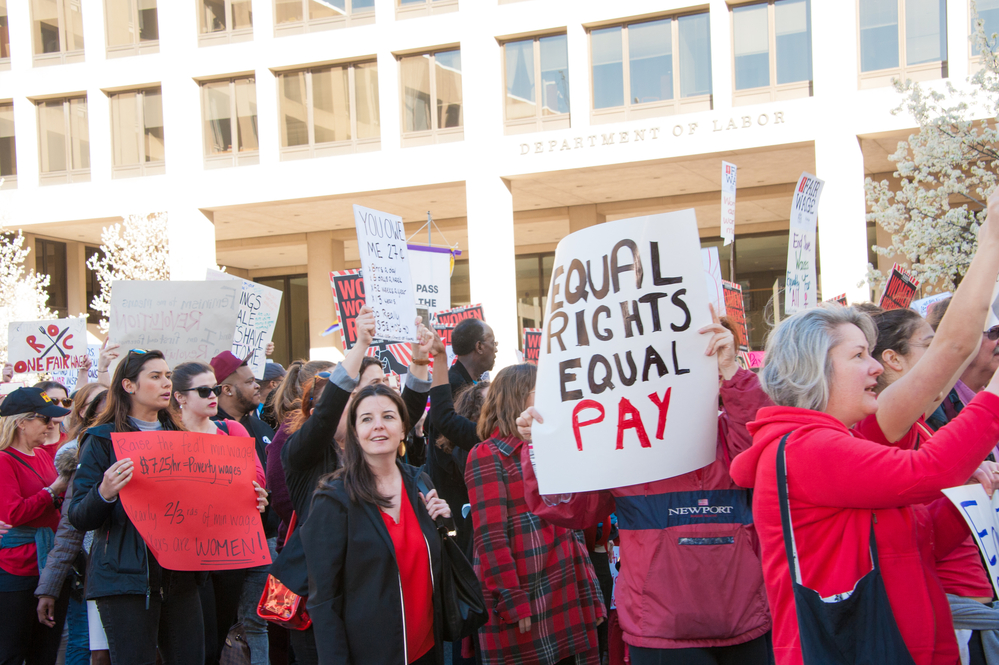The gender wage gap (GWG) has been a concern in the United States since the 1950s. Congress began enacting equal pay legislation in the 1960s. In 2019, then-Senator Kamala Harris proposed a plan requiring all companies with 100 or more employees to earn “equal pay certification” by proving that men and women are paid equally for performing the same tasks or face a 1% fine on their profits for every 1% wage gap. Members of Congress are pushing for equal pay in the private sector, an outcome they have not yet achieved.
Shifting demographic and labor market conditions have reduced the GWG. According to the 2016 Joint Economic Committee Democratic Staff, the national average wage for full-time females was 79 cents for every dollar earned by a male, compared to 72 cents in 1999. But such raw data comparisons can be misleading. They do not control for many factors affecting wages, yet they continue to spark debate among policymakers attempting to remedy this disparity. The GWG in the United States remained at roughly 60% from the 1950s through the late 1970s. Studies suggest a 9% gap narrowing in the 1980s, while the 1990s witnessed only a 3.5% decline. Researchers argue that while the GWG had been converging slowly, the rate has been static since 2000.
Harvard economist Claudia Goldin argues that the education gap has closed. She contends the GWG may have more to do with labor market structures and differences in the occupational desire for flexibility, negotiating style, or job preferences between genders. Goldin contends that the GWG that remains can be explained by the substitutability of the individual and the flexibility of the job. Fields like pharmacy and technology—linear occupations—have little to no gender gap due to a flexible labor market allowing individuals to work remotely or part-time to adjust for personal choices. In contrast, non-linear occupations, e.g., finance and legal professions, have larger wage gaps and more limited flexibility. Factors considered when charting occupations using a linear scale include time pressure, personal contact, establishing and maintaining relationships, structured versus unstructured work, and decision-making freedom.
Literature exploring the GWG within government agencies and branches is limited. In 1978, George Borjas found the GWG for the Department of Health and Human Services to be larger than that of the public universities it monitored for wage discrimination. After examining the office of Senator Elizabeth Warren, The Washington Free Beacon’s Bret Scher reported a GWG nearly 10% wider than the national average. With equal pay legislation pending in Congress, we might expect to see a smaller or even zero GWG for congressional employees. Many academic studies on the gender wage gap in the public and private sectors exist; only a few examine the GWG for congressional staff. In a working paper, political scientists Joshua McCrain and Maxwell Palmer focus on the GWG in the US House and Senate. They argue that the wage gap is important because staffers influence policy outcomes.
My recent paper co-authored with Meg Montgomery examines the GWG in congressional offices using data from 2000 to 2016. We find that a GWG exists similar to the gap in the private sector. Our research indicates education, experience, working in the Senate, and marriage consistently explain the gap. On average the offices of Republican members of Congress exhibit a larger gap. The gap is wider in the Senate than in the House of Representatives, although wage gaps exist in both the Democratic Party and the House of Representatives. Intrestingly enough the gender of the Congress member does not seem reduce the GWG. Nor does the Congress members advocation for women’s rights or labor market issues. In other words, female Congress members do not help to reduce the GWG, nor does their claim to advocate on these issues.

Why does a GWG exist for Congressional staffers when Congress can eliminate it? Public choice economics offers one potential explanation. In economic organizations, the monitoring costs of principals (voters) are too high; thus, agents (politicians) can shirk. A politician can deviate from constituents’ preferred policy positions and seek their interests. However, shirking may only explain why staffer wage gaps persist without constituents complaining. Why gaps remain might involve additional considerations.
Consider the linearity of a Congressional staff position. According to a Congressional Management Foundation survey, the average congressional staff job is “high stress and high volume” with a turnover rate between 40% and 60%. Congressional staffers claim this is a way to serve their country; therefore, an attraction-selection-attrition cycle exists even for those with public service motivations. Still, the job satisfaction survey reports that 55% of staffers say work-life balance is important, but only 26% are very satisfied with that balance. Additionally, 57% claim that decision-making autonomy is important, but only 31% are very satisfied with their ability to make independent decisions. Being a congressional staffer might be more non-linear because of the job’s lack of autonomy, time pressures, and personal contact. Thus, Goldin’s non-linear explanation for the GWG of congressional staff positions may explain why the gap exists in an organization that attempts to mitigate it.
The average gender wage gap from 2000 to 2016 was 77 cents to the dollar. We find a 71 cent GWG for congressional staff members- about 6 cents larger than the national average. Using a study from 1970 through 2010, they compare the congressional staff GWG to those estimates and find it is slightly smaller and slightly larger than the average of the public and private sectors.
House and Senate members exercise discretion over the budgets for their staff. One would expect that Congress members who advocate equal pay legislation would pay their staff equal salaries. Evidence of a gender wage gap suggests that such advocacy is not carried into practice. Furthermore, the explanation of the congressional staff GWG is much the same as in other industries. Congress might operate as a non-linear industry offering less flexibility and substitutability among workers. Like Goldin, we argue that labor market restructuring, and not legislation, might be key in narrowing the gender wage gap. If Congress wants to close the gender wage gap, policies allowing for greater labor-market flexibility are the answer, including on Capitol Hill. One positive to the pandemic is that employers now understand how their workforce can operate flexibly and remotely which may help reduce the gender wage gap.


READER COMMENTS
J Mann
Apr 9 2021 at 2:25pm
That’s interesting. Unless I’m missing something, it looks like there are two explanations.
Female congressional staffers are discriminated against, in that a $100,000 salary allows a congressperson to hire on average a more productive woman than a man. (For whatever measures of productivity are important to the congressperson.) Even equal wage advocates and democrats are leaving productivity on the table as a result of discrimination.
The above statement is not correct. On average, congresspeople get what they pay for in terms of productivity.
Comments are closed.